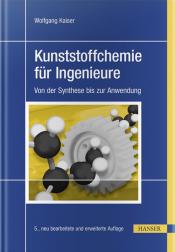plasticker-News
| 04.12.2009 | Lesedauer: ca. 3 Minuten |

|
[Die folgende Meldung liegt nur in englischer Sprache vor]
Petcore: Can Bio-based Plastics ever Substitute Conventional Plastics?
|
The associations European Bio-plastics and the European Polysaccharide Network of Excellence (EPNOE) have recently published a jointly-commissioned study on bio-based plastics. It forecasts their capacity developments and technical substitution potential. The authors, from Utrecht University estimated a substitution potential of up to 90 percent of the total consumption of plastics by bio-based polymers to be technically possible. This statement has been produced in response to political and public concerns with the aim of eliminating confusion caused in the markets and to avoid misinterpretations due to lack of clarity on this delicate topic. The manufacture of some bio-plastics may appear to involve the use of less energy in substrate production and conversion (forming), compared to oil-based conventional alternatives. The whole energy utilisation chain from planting, via harvest to plastic manufacture is less well documented and work to comprehend this should be carried out by bio-plastics producers. Additionally the socio-economic effects of land use must also be included in the overall analysis. According to work carried out in the US by Business Development Associates bio-plastics are not cost-competitive for the manufacture of single-use disposable packaging; nor are they likely to become so, unless there is a drastic increase in the cost of petroleum-based polymers. This will be independent of any impact of such petroleum cost increases on bio-plastics. Nonetheless, it is likely that the use of bio-plastics will expand in niche market applications driven by non-economic benefits such as “sustainability”. It is expected that initial growth will come in selected applications where bio-plastics are the least non-cost competitive. PLA, the only water-clear packaging biopolymer, appears to be the most nearly cost competitive. It has substituted very small volumes of PET, particularly in situations where its lower thermal stability, greater moisture vapour transmission rate (MVTR) and increased brittleness are acceptable. If the use of bio-plastics affects the product shelf life (ie reduces shelf life) or necessitates additional temperature-controlled storage or distribution conditions, this may reduce the environmental benefits being sought. Bio-plastics appear to have caused a great deal of confusion amongst consumers. In particular there is a low level of understanding of the terms „biodegradable. or „compostable. and their implications. It is the responsibility of companies introducing new materials to ensure that they are fully understood by consumers and other stakeholders. Options for recycling, composting and disposal of bio-plastics need to be clear and easily managed to ensure that bio-plastics do not disrupt existing recycling infrastructures. It is possible that bio-plastics can be separated from conventional plastics using near infra red and laser fluorescence technologies but this would necessitate significant extra investment by reprocessors and waste management companies. Without separation bio-plastics can contaminate the recycling stream even at very low levels (less than 0.1%). Most bio-plastics are designed to compost under specific environmental conditions. This is normally in a commercial composting facility which can achieve temperatures of above 60 °C. Currently no local authority will accept bio-plastics packaging in organic waste collection due to the risk of contamination with conventional plastics. Very few of the available bio-plastics are suitable for the lower temperatures achieved in home composting. It is vital when supplying these materials to end consumers that this distinction is made. Disposal of bio-plastics to landfill will increase the generation and release of methane gas and this is directly counter to the fulfilment of the obligations under the EU Landfill Directive. Conclusion There needs to be significant research carried out to understand the impact of bio-plastics on the environment, food production, manufacturing and recycling. In short a lot more clear, unambiguous, peer-reviewed information is required. More Information: www.petcore.org |
Petcore, Brussels, Belgium
» insgesamt 28 News über "Petcore" im News-Archiv gefunden
Ihre News im plasticker? Bitte senden Sie Ihre Pressemitteilungen an redaktion@plasticker.de!
| » zurück zum Seitenanfang |











 Wir informieren Sie schnell, umfassend und kostenlos über das, was
in der Branche passiert.
Wir informieren Sie schnell, umfassend und kostenlos über das, was
in der Branche passiert.

